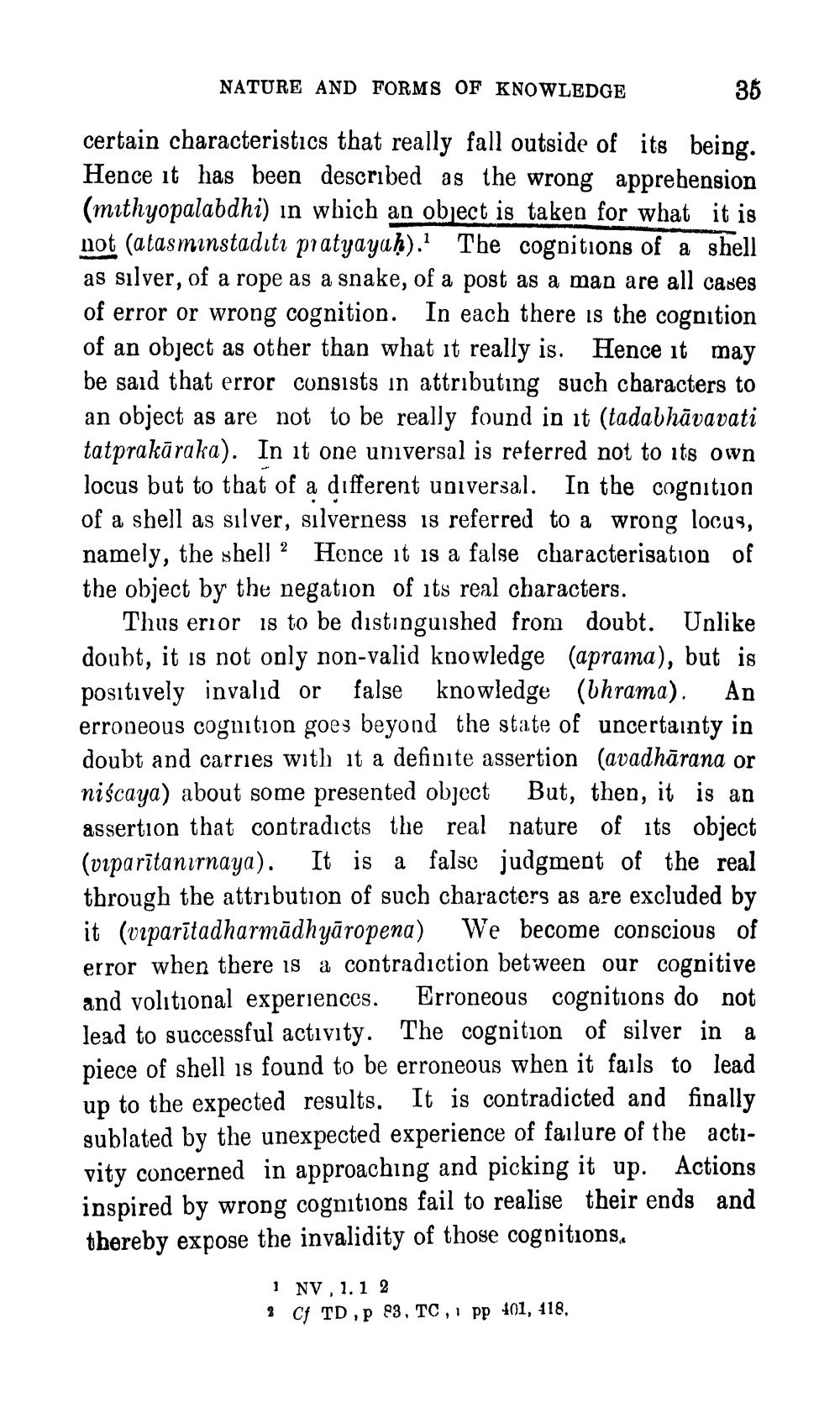________________
NATURE AND FORMS OF KNOWLEDGE
35
1
certain characteristics that really fall outside of its being. Hence it has been described as the wrong apprehension (mithyopalabdhi) in which an object is taken for what it is not (atasminstaditi pratyayaḥ). The cognitions of a shell as silver, of a rope as a snake, of a post as a man are all cases of error or wrong cognition. In each there is the cognition of an object as other than what it really is. Hence it may be said that error consists in attributing such characters to an object as are not to be really found in it (tadabhāvavati tatprakaraka). In it one universal is referred not to its own locus but to that of a different universal. In the cognition of a shell as silver, silverness is referred to a wrong locus, namely, the shell 2 Hence it is a false characterisation of the object by the negation of its real characters.
Thus erior is to be distinguished from doubt. Unlike doubt, it is not only non-valid knowledge (aprama), but is positively invalid or false knowledge (bhrama). An erroneous cognition goes beyond the state of uncertainty in doubt and carries with it a definite assertion (avadhārana or niscaya) about some presented object But, then, it is an assertion that contradicts the real nature of its object (viparitanirnaya). It is a false judgment of the real through the attribution of such characters as are excluded by it (viparitadharmādhyāropena) We become conscious of error when there is a contradiction between our cognitive and volitional experiences. Erroneous cognitions do not lead to successful activity. The cognition of silver in a piece of shell is found to be erroneous when it fails to lead up to the expected results. It is contradicted and finally sublated by the unexpected experience of failure of the activity concerned in approaching and picking it up. Actions inspired by wrong cognitions fail to realise their ends and thereby expose the invalidity of those cognitions.
1 NV, 1.1 2
2 Cf TD, p 83, TC, pp 401, 418.




